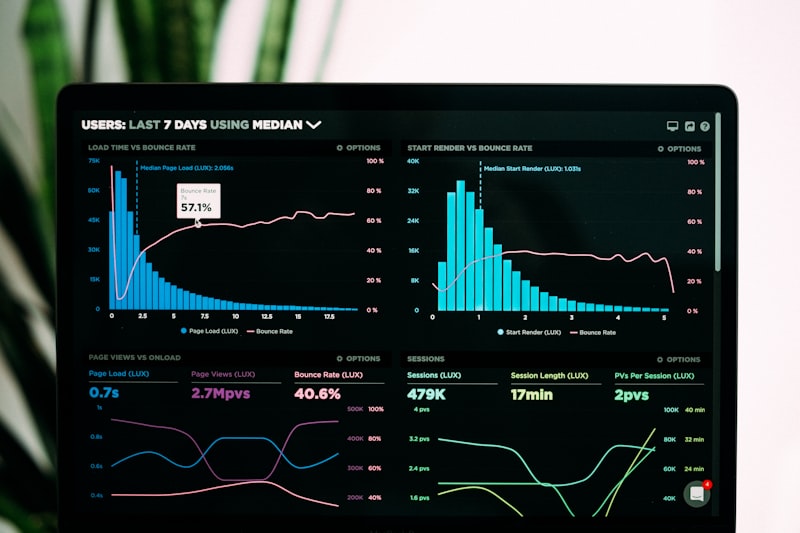The Complete Guide to Generating Powerful Brand Signals
Boost Your Online Visibility and Search Rankings
What Are Brand Signals and Why They Matter
Brand signals are the digital footprints that establish your brand's authority, credibility, and popularity online. In today's competitive digital landscape, keyword-rich content alone isn't enough - search engines like Google now prioritize brands that demonstrate strong signals of trust and engagement.
From structured content with proper header tags (H1-H6) to social media mentions and backlink profiles, brand signals encompass all the factors that tell search engines your business is legitimate, popular, and authoritative in your industry.

"Companies with strong brand signals experience 3-5x more organic traffic than competitors with weaker signals, according to recent SEO studies. Proper keyword placement (title, meta description, headings, content) combined with consistent brand signals creates a powerful ranking combination."
The Evolution of Brand Signals in SEO
Early Search Algorithms (1990s-2000s)
In the early days of SEO, search rankings were primarily determined by keyword density and basic on-page factors. The concept of brand signals emerged as search engines needed ways to identify trustworthy sources among growing web spam.
Key developments included:
- Introduction of PageRank algorithm (1998)
- Importance of descriptive URLs and short URLs
- Early emphasis on keyword in title tag and meta description optimization
Modern Brand Signal Era (2010s-Present)
Google's algorithm updates (Panda, Penguin, Hummingbird) shifted focus toward brand authority and user experience. Today, brand signals account for approximately 25% of ranking factors according to industry studies.
Modern brand signals include:
- Mobile-friendly design and responsive design
- Page speed optimization and fast-loading pages
- Schema markup and structured data
- Content freshness and regular content updates
- Keyword clustering and long-tail keywords
12 Essential Brand Signal Strategies
Optimize Title Tags
Title tag optimization remains crucial. Include your brand name in 70% of title tags, keeping them under 60 characters. Example:
"Digital Marketing Services | Award-Winning Agency | [Brand]"
Use unique title tags for each page with primary keyword in title tag positioned early.
Enhance Meta Descriptions
Write compelling meta descriptions that include:
- Primary keyword naturally
- Brand name
- Unique value proposition
- Call-to-action
"Get expert [service] from [Brand], trusted by 10,000+ clients since 2010. Free consultation!"
Structure Content Properly
Use proper header tags (H1-H6) hierarchy:
- One H1 per page with keyword in headings
- Logical H2-H6 structure
- Include brand terms in subheadings
This creates structured content that's easy for search engines to understand.
Create High-Quality Content
Develop high-quality content that demonstrates expertise:
- Aim for content length of 1,500+ words for pillar pages
- Update content regularly (content freshness)
- Mix evergreen content with trending topics
Optimize URL Structure
Create descriptive URLs with these best practices:
- Include primary keyword in URL
- Keep them as short URLs as possible
- Use hyphens to separate words
- Example: example.com/digital-marketing-services
Optimize Images
Implement complete image optimization:
- Use descriptive alt tags with keywords
- Include brand name in image file names
- Apply image compression for page speed optimization
Build Internal Links
Develop a strong internal linking structure:
- Link to important pages using relevant internal links
- Use brand terms in anchor text optimization
- Create content clusters around topics
Ensure Mobile-Friendliness
With mobile-first indexing:
- Implement responsive design
- Test mobile-friendly design with Google's tool
- Optimize for page load time
Improve Page Speed
Fast-loading pages signal quality:
- Aim for under 2-second page load time
- Implement page speed optimization techniques
- Use caching and CDNs
Implement Schema Markup
Use schema markup to enhance visibility:
- Add structured data for products, reviews, FAQs
- Aim for rich snippets in search results
- Use JSON-LD format
Maintain Content Freshness
Keep your content updated:
- Schedule regular content updates
- Balance fresh content with evergreen content
- Add "Last Updated" dates
Conduct Keyword Research
Master keyword research and optimization:
- Find long-tail keywords with buying intent
- Group terms into keyword clustering themes
- Maintain proper keyword density (1-2%)
Real-World Brand Signal Success Stories
E-commerce Brand Case Study
A fashion retailer implemented comprehensive image optimization including alt tags and image compression, resulting in:
- 35% increase in organic traffic
- 22% improvement in page load time
- 15% higher conversion rate
B2B SaaS Case Study
A software company implemented schema markup and structured data, achieving:
- 40% more rich snippets in search results
- 28% higher CTR from SERPs
- 20% increase in demo requests
Brand Signals Ecosystem Diagram

The brand signals ecosystem showing how different elements interact to build online authority and search visibility through proper keyword placement (title, meta description, headings, content) and technical optimizations.
Mastering Brand Signals for SEO Success
Generating powerful brand signals is no longer optional in today's competitive digital landscape. By implementing these 12 strategies - from title tag optimization to schema markup - you can significantly boost your online visibility and search rankings.
Remember that brand signals work cumulatively. A single compelling meta description won't transform your rankings, but consistently applying all these tactics will create a strong brand presence that search engines recognize and reward.
Start with technical foundations like mobile-friendly design and page speed optimization, then layer on content strategies like keyword clustering and fresh content updates. Monitor your progress through analytics and continue refining your approach.
"Brands that implement comprehensive brand signal strategies typically see 3-6 month lag before full impact, but then sustain higher rankings for years. This long-term advantage makes brand signal optimization one of the highest ROI activities in digital marketing."





0 Comments